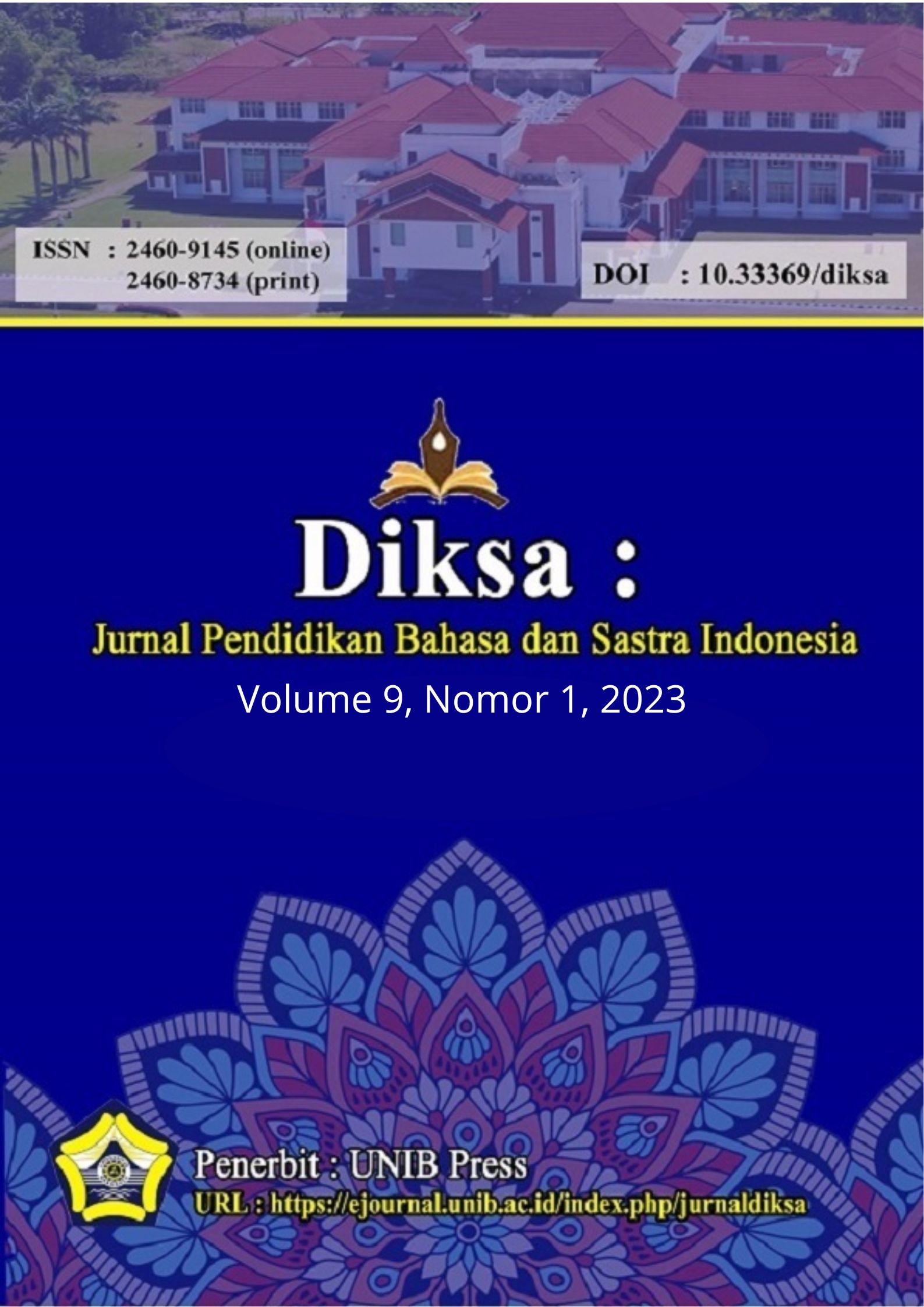Main Article Content
Abstract
Keywords
Article Details
Copyright (c) 2023 Reci Apreno

This work is licensed under a Creative Commons Attribution-ShareAlike 4.0 International License.
Authors who publish with this journal agree to the following terms:
- Authors retain copyright and grant the journal right of first publication with the work simultaneously licensed under a Creative Commons Attribution License that allows others to share the work with an acknowledgment of the work's authorship and initial publication in this journal.
- Authors are able to enter into separate, additional contractual arrangements for the non-exclusive distribution of the journal's published version of the work (e.g., post it to an institutional repository or publish it in a book), with an acknowledgment of its initial publication in this journal.
- Authors are permitted and encouraged to post their work online (e.g., in institutional repositories or on their website) prior to and during the submission process, as it can lead to productive exchanges, as well as earlier and greater citation of published work (See The Effect of Open Access).
References
- Donnelly, K. M. and Berge, Z. L. (2006) ‘Podcasting: Co-opting MP3 Players for Education and Training Purposes’, Journal of Distance Learning Administration, 9(3), pp. 1–8.
- Febriani, I. (2020) ‘Struktur Percakapan dalam Sidang Sengketa Pilpres 2019 Saksi Ahli Paparkan Situng’, Jurnal Metabasa, 2(1), pp. 30–35.
- Ginting, S. A. (2010) Sistem dan Struktur Percakapan dalam Bahasa Karo. Universitas Sumatra Utara.
- Hutabarat, P. M. (2020) ‘Pengembangan Podcast Sebagai Media Suplemen Pembelajaran Berbasis Digital pada Perguruan Tinggi’, Jurnal sosial Humaniora Terapan, 2(2), pp. 107–116.
- Kriyantono, R. (2006) Teknik Praktis Riset Komunikasi. Jakarta: Kencana.
- Meisyanti and Kencana, W. H. (2020) ‘Platform Digital Siaran Suara Berbasis On Demand (Studi Deskriptif Podcast di Indonesia)’, Jurnal Komunikasi dan Media, 4(2), pp. 191–206.
- Radika, M. I. and Setiawati, S. D. (2020) ‘Strategi Komunikasi Podcast Dalam Mempertahankan Pendengar ( Studi kasus Dalam Podcast Do You See What I See ) Podcast Communication Strategy In Maintaining Hears ( Study In Podcast Do You See What I See )’, Jurnal Ilmu Komunikasi, III(Ii), pp. 96–106.
- Schiffrin, D. (2007) Ancangan Kajian Wacana. Yogyakarta: Pustaka Belajar.
- Talan, M. R. (2019) ‘Struktur Percakapan Guru dengan Siswa dalam Interaksi Pembelajaran Bahasa Indonesia’, Jurnal Ilmu Pendidikan Bahasa dan Sastra Indonesia, 4(2), pp. 77–84. doi: 10.32938/jbi.v4i2.134.
- Yule, G. (2006) Pragmatik. Yogyakarta: Pustaka Belajar.
- Yusuf (2017) Metode Penelitian Kuantitatif, kualitatif & Gabungan. Jakarta: Kencana.
References
Donnelly, K. M. and Berge, Z. L. (2006) ‘Podcasting: Co-opting MP3 Players for Education and Training Purposes’, Journal of Distance Learning Administration, 9(3), pp. 1–8.
Febriani, I. (2020) ‘Struktur Percakapan dalam Sidang Sengketa Pilpres 2019 Saksi Ahli Paparkan Situng’, Jurnal Metabasa, 2(1), pp. 30–35.
Ginting, S. A. (2010) Sistem dan Struktur Percakapan dalam Bahasa Karo. Universitas Sumatra Utara.
Hutabarat, P. M. (2020) ‘Pengembangan Podcast Sebagai Media Suplemen Pembelajaran Berbasis Digital pada Perguruan Tinggi’, Jurnal sosial Humaniora Terapan, 2(2), pp. 107–116.
Kriyantono, R. (2006) Teknik Praktis Riset Komunikasi. Jakarta: Kencana.
Meisyanti and Kencana, W. H. (2020) ‘Platform Digital Siaran Suara Berbasis On Demand (Studi Deskriptif Podcast di Indonesia)’, Jurnal Komunikasi dan Media, 4(2), pp. 191–206.
Radika, M. I. and Setiawati, S. D. (2020) ‘Strategi Komunikasi Podcast Dalam Mempertahankan Pendengar ( Studi kasus Dalam Podcast Do You See What I See ) Podcast Communication Strategy In Maintaining Hears ( Study In Podcast Do You See What I See )’, Jurnal Ilmu Komunikasi, III(Ii), pp. 96–106.
Schiffrin, D. (2007) Ancangan Kajian Wacana. Yogyakarta: Pustaka Belajar.
Talan, M. R. (2019) ‘Struktur Percakapan Guru dengan Siswa dalam Interaksi Pembelajaran Bahasa Indonesia’, Jurnal Ilmu Pendidikan Bahasa dan Sastra Indonesia, 4(2), pp. 77–84. doi: 10.32938/jbi.v4i2.134.
Yule, G. (2006) Pragmatik. Yogyakarta: Pustaka Belajar.
Yusuf (2017) Metode Penelitian Kuantitatif, kualitatif & Gabungan. Jakarta: Kencana.
